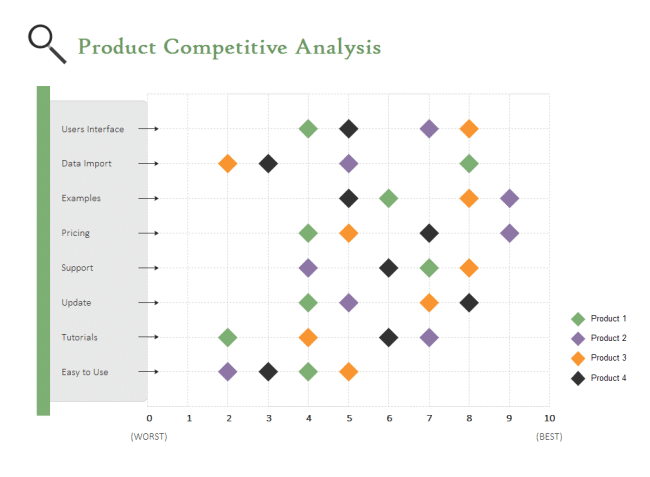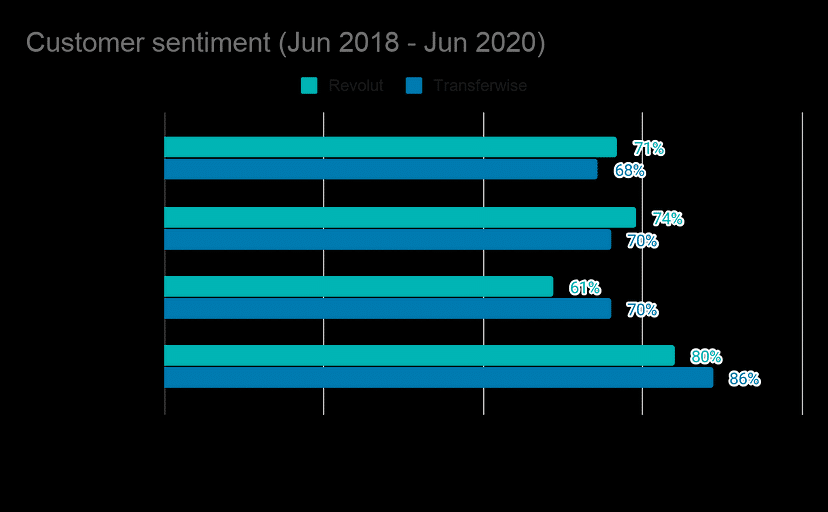Product Feedback: How to Gather More Insights from Customers
Surely, world-class products are not made overnight. No matter what type of product you’re dealing with, consistently developing a product that satisfies your customers’ needs and lives up to their expectations is very important. That’s why product feedback is very important, being well-received by its target customers marks the success of every product.
Whether it’s for upgrading an existing product or developing a new one, your priority must be the satisfaction of your users and understanding what they need.
The question is, how do you get to your customers’ level? How will you know what makes them happy and satisfied with your product and what could ruin their experience?
The best way to know this is through Product Feedback. Product Feedback allows your customers to tell you about their experience with your product and all the ways they think it can level up to improve their experience. This process ensures that your products are in tune with your customer’s expectations.
In this article, we’ll talk about the importance of Product Feedback, how to collect it, and how you can use turn it into actionable ideas.
Table of Contents
What is product feedback?
Product Feedback is any form of information or response that customers share about their experience with a certain product. Companies collect customer feedback through feedback forms, customer surveys, social media, and many more.
Product Feedback comes in many forms, it can be a suggestion, a complaint, detailed online reviews, or anything a customer feels like they should say about your product and their overall experience with it.
From a simple reaction on social media to a long and detailed recommendation, user feedback is crucial to the product development process and should be taken seriously. Product feedback should be one of the deciding factors as your product matures and develops.
Different types of product feedback
There are two types of Product Feedback: Solicited Feedback and Unsolicited Feedback. When the customers are asked to participate in product surveys through social media, email, website popups, SMS, and any other way, it’s called Solicited Feedback.
Unsolicited Feedback, however, is when a user provides feedback without using any of the means mentioned above. It usually comes in different forms. It can be through social media comments, complaints, suggestions, and even word of mouth.
Between the two, gathering solicited product feedback is better than waiting for a customer to raise an issue.
Let’s dig into the different types of product feedback:
#1. Survey
Conducting surveys is one of the most influential research strategies that can help you gather qualitative feedback for specific cases. You can use feedback surveys for:
- Monitoring the performance of new product launches
- Validating new ideas before starting the product development process, and
- Analyzing the value of your product

Source: Intercom
Here are some tips for creating an effective product survey:
- Keep the questions short – keep in mind that most of your respondents have limited time and willingness to answer your feedback survey. Include up to five questions only to keep it short, easy, and effective.
- Ask both open-ended and closed-ended questions – answering too many open-ended questions takes a long time and can be complicated for your respondents. On the contrary, only asking closed-ended questions that can only be answered with Yes or No won’t be able to provide you with enough data to go on. Combining both is the most effective way to create a survey that will lead to results.
- Avoid leading questions – asking questions that will lead towards a positive or a negative answer can send a poor message to your customers. To avoid this, you can ask them to share their experience with the product.
#2. Customer interviews
In collecting product feedback, customer interviews are among the ways to get in-depth and valuable feedback that can be helpful throughout the building process. Conducting user interviews will always give you deeper insights into your product.
From gathering useful ideas for product design to collecting feedback after product launch, customer interviews are certainly a great way to gather feedback data.
No matter what your goal is, the secret to a good customer interview is to let the conversation unfold naturally.
#3. Product analytics
If you want to gather information about the performance of your product, product analytics is the most effective way to go. It’s the process of analyzing how your users engage with your product and collecting quantitative feedback in the process.
Product managers use product analytics to understand and visualize user engagement. To do this, you can create a prompt for every possible action your users may take. With the data you will gather, you can analyze how many customers engage with a certain feature and how often they do it.
Product analytics is also a great way to identify any issue in your product. You can measure customer loyalty and compare the data within industry standards.
#4. Customer support
Unlike the ones mentioned above, customer support tickets are usually negative customer feedback. Customers normally reach out and create support tickets when they are experiencing some issue with the product.
However, it’s still very important to collect this type of product feedback because it keeps you on top of urgent product fixes and customer support. If there is a recurring issue that needs fixing, you can keep it in mind for future product development.
Customer support tickets can also help you identify certain aspects of your product that needs updating in order to align better with your customers’ satisfaction.
#5. Sales and customer success follow-up
Customer success follow-up is the process of ensuring that your customers achieve the maximum level of satisfaction with your product. This method is relationship-centred and helps align your goals with your users.
Customer success follow-up is a more engaging approach than customer support because you’re initiating the connection with your users and anticipating their needs to help them achieve their desired experience with your product.
Creating a product feedback loop
Using the different types of collecting product feedback will only be effective once you use them to create a process that helps feedback reach your team and is consistently administered. This process is called the product feedback loop.

Source: Maze
A product feedback loop should be an ongoing process of gathering customer feedback and implementing the information throughout product development. This process is consistent and repetitive as new feedback influences new product ideas and updates.
Having a constant flow of product feedback will help you keep track of user satisfaction and establish a good relationship between you and your users.
How to collect great customer feedback with Gamification
One of the best ways of collecting product feedback is through Gamification. This strategy encourages users to provide feedback through the use of engaging activities and rewards. If done perfectly, you can also use this method to boost user engagement and track customer behaviour.
Here are two ways you can benefit from feedback gamification:
Download your free
“Gamification Guide”
Get your PDF now and start transforming your approach to digital engagement!
#1. Solicited Feedback
Customers sometimes find it difficult to share feedback. That’s why it’s important to create a system that makes the experience enjoyable. Gamification is a product feedback tool that motivates users and gives them a sense of accomplishment as they go on.
By implementing game strategies in collecting solicited feedback, you can enhance user engagement and involvement.
#2. Unsolicited Feedback
Gamification can also help in gathering unsolicited feedback. It can provide information about how your users engage with your product by tracking their activities and behaviours. With this information, you can create usage patterns to improve your product.
If you’re looking to use gamification as a product feedback strategy, here are five ideas to get you started:
- Use measurable goals to encourage specific actions.
- Focus on rewarding small accomplishments to make the activity more enjoyable.
- Keep the activities meaningful by only evaluating admissible achievement.
- Be creative with rewards by turning their points into benefits they can use.
Importance of product feedback
There are many reasons why gathering qualitative product feedback is important, but here are five key benefits:
#1. To improve customer experience
Your product’s success depends heavily on customer experience. However, without product feedback, there’s no way for you to know how well your product did. And without knowing about your customer’s experience, you don’t have the information you need on how to improve your product.
Product feedback helps you monitor the changes your users want to bring them maximum customer satisfaction. This improves customer experience and helps with customer retention.
#2. To know about product issues
Product development is a tedious process. You may exhaust the effort of your product team in developing a product and still end up with several issues.
Whether you are dealing with glitches, bugs, or slow interfaces, any issue that affects the overall functionality of your product is something that needs looking into.
By gathering product feedback, you will get valuable insights into the issues mentioned above and immediately look into or eliminate them. This keeps you on top of your game and brings value to your customers.
#3. To be updated with new market demands
As the market enhances, your customers’ needs and demands change as well. This means that your products need to keep up with market demands. Constant product upgrades are necessary to keep your users satisfied and engaged.
Without product feedback, keeping up with new market demands and trends will be difficult.
Product feedback helps you set your priorities straight and keeps you informed on the features you need to develop and upgrade to meet modern trends and demands related to your product.
#4. To be used for competitor analysis
Aside from enhancing customer satisfaction and updating you on product issues and market demands, product feedback also gathers information about market competition. When drafting your feedback survey, you can include questions about what your users think is the best alternative for your product.

Source: Edrawsoft
You can ask straightforward questions such as what brands they are planning to switch to and what those brands offer that you aren’t currently offering.
#5. To make better marketing and sales strategies
Lastly, product feedback can help you understand the customer journey and behaviour.
With regular product feedback, you can track how your users interact with your product. You can gather information about their preferences and how often they change. With this information at hand, you can make relevant marketing and sales strategies that align with customer behaviour.
How to collect great product feedback
Although customer feedback greatly impacts the product development process, it’s fair to say that not all feedback can be useful. When conducting any method of research, gathering data requires knowing that not all of it is going to make a positive impact on the study.
Here’s what you can do to collect great customer feedback:
#1. Establish clear goals
Before you start to collect product feedback, the first thing you need to do is establish your goals and recognize the ways to get there.
The goals you will establish will point you in the right direction and help you choose what method of collecting product feedback is best to use. Conducting user interviews is excellent for gathering information during a product launch. On the other hand, in-app surveys may not provide in-depth information for such a purpose
Establishing your goals is the first and most important step in order for you to make informed decisions.
#2. Ask the right questions
After establishing clear goals, asking the right questions is the next step to getting excellent feedback. You need to craft effective questions and surveys to send users or create an elaborate research plan to use for customer interviews.
Some of the things to keep in mind when crafting these questions are:
- Avoid leading questions.
- For customer interviews, avoid closed-ended questions.
- Ask the users to elaborate on specific moments when using the product.
#3. Let the conversation unfold naturally
As you follow a list of prepared questions, you can also encourage the customer to share their experiences. During customer interviews and follow-ups, listen closely to your customer and pay attention to challenges they may mention when using your product.
You can also ask very broad questions to know more about their overall experience. Letting the conversation unfold naturally will help you not only build trust with your customer but also gather relevant information.
How to turn product feedback into actionable ideas
As mentioned previously, it’s very important to establish a process that turns the feedback you have gathered into actionable ideas. The product feedback loop is an easy process. Here is a step-by-step guide on how you can effectively do it:
Step 1: Group the feedback into categories
The first thing you need to do is analyze the feedback you have gathered and group them into different categories. You can sort them into categories like technical issues, feature update requests, or general suggestions.
By grouping related feedback, it will be easy for you to recognize patterns you can use for product development. There are a lot of product feedback tools you can use that will automatically group customer feedback by categories. This will make it easier for you to categorize your data.
Step 2: Analyze the feedback
After grouping product feedback by categories, you will start to see patterns emerge. These patterns will help you spot the most requested updates by your users and prioritize them by relevancy, business impact, and importance.

Source: Medium
When analyzing the product feedback, keep the participants’ background information in mind as it will help you recognize the relevancy of each piece of feedback and why it’s important to act on it.
Analyzing the reason behind every piece of feedback is imperative to know which ideas to prioritize.
Step 3: Prioritize important ideas
New product ideas or upgrades coming from customer feedback can be fascinating to come across. However, in reality, you won’t have enough time and resources to put every single idea into action.
This is where prioritization comes in. Being able to identify the ideas that will improve user experience and make the most sense to your business is critical.
There are many prioritization techniques you can apply. According to Deloitte’s Product Manager, Divyam Kaushik, you need to ask yourself these questions to help you prioritize product ideas:
“Does it align with our business strategy?”
“How will it impact our revenue and sales?”
“Will it attract new quality customers or retain the loyalty of existing ones?”
If the product idea gives you positive answers to all of those questions, then it must be prioritized and dealt with.
Step 4: Test and validate
Once you have decided which ideas to prioritize and work on, you can now start testing and researching any possible strategy and validate them with your users.
Testing the idea is one of the most important steps of the process because there may be multiple ways to solve a single issue. Make sure to find the best solution that will hit all the targets: user experience, design resources, and business impact.
Conclusion
Product Feedback is one of the most important ways to get on your customer’s level. It’s the best source of information on what your customers want and would like to improve about your product. This helps you make an informed decision as you go along your product development process.
Listening to what your users have to say will not only help you develop the most sought-after products in the market but will also benefit your overall sales and customer loyalty. As the market demand changes and matures, this process should not be a one-time occurrence but an important part of product development.
Looking to improve your product feedback strategy? Our experts at Mambo will help you create effective solutions with a unique gamified experience. Book a demo now!
Latest Posts
Machine Learning In Finance: 12 Essential Applications
The impact of machine learning on finance is significant. Thanks to this technology, financial institutions are now equipped to make efficient decisions. Through the analysis of data sets, machine learning […]
How To Create Interactive Compliance Training For Bank Employees
Banking compliance training isn’t just another task. It’s the stage where everything else performs. Banks must navigate a myriad of regulations and laws. After all, this is a trust-driven, high-stakes […]
How Fintech Apps Are Using Gamification To Increase User Engagement
Discover how gamification in fintech is revolutionizing financial engagement, making banking fun & boosting user loyalty.





